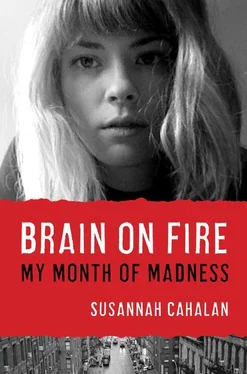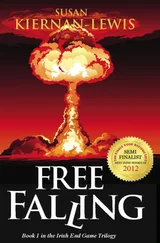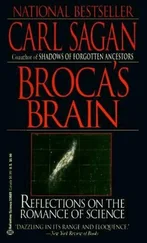35 visual indifference: V. S. Ramachandran and Sandra Blakeslee, Phantoms in the Brain: Probing the Mysteries of the Human Mind (New York: Morrow, 1998), 118.
36 The blood-brain barrier (BBB): Davis Lab, “History of the Blood Brain Barrier,” University of Arizona, http://davislab.med.arizona.edu/content/history-blood-brain-barrier(accessed April 23, 2011).
37 These steroids, called corticosteroids: Julia C. Buckingham, “Glucocorticoids: Exemplars of Multi-Tasking,” British Journal of Pharmacology 147 (2006): S258—S268. Mayo Clinic Staff, “Prednisone and Other Corticosteroids: Balance the Risks and Benefits,” MayoClinic.com, http://www.mayoclinic.com/health/steriods/HQ01431(accessed May 8, 2011). Peter J. Barnes, “How Corticosteroids Control Inflammation: Quintiles Prize Lecture 2005,” British Journal of Pharmacology 148 (2006): 245–254.
CHAPTER 29: DALMAU’S DISEASE
38 paraneoplastic syndrome: National Institute of Neurological Disorders and Stroke, “NINDS Paraneoplastic Syndrome Information Page,” National Institutes of Health, http://www.ninds.nih.gov/disorders/paraneoplastic/paraneoplastic.htm(accessed March 2, 2011). Roberta Vitaliani, Warren Mason, Beau Ances, Theodore Zwerdling, Zhilong Jiang, and Josep Dalmau, “Paraneoplastic Encephalitis, Psychiatric Symptoms, and Hypoventilation in Ovarian Teratomas,” Annals of Neurology 58 (2005): 594–604.
39 NMDA (N-methyl-D-aspartate acid) receptors are vital to learning: David J. Linden, The Accidental Mind: How Brain Evolution Has Given Us Love, Memory, Dreams and God (Cambridge, Mass.: Belknap Press of Harvard University Press, 2007), 107–144. Fei Li and Joe Z. Tsien, “Memory and NMDA Receptors,” New England Journal of Medicine 361 (2009): 302–303.
40 “knockout mice” without NMDA receptors: Wade Roush, “New Knockout Mice Point to Molecular Basis of Memory,” Science 275 (1997), www.bio.davidson.edu/courses/molbio/restricted/knockbrain/BrainKO.html(accessed May 18, 2011). Zhenzhong Cui, Huimin Wang, Yuansheng Tan, Kimberly A. Zaia, Shuqin Zhang, and Joe Z. Tsein, “Inducible and Reversible NR1 Knockout Reveals Crucial Role of the NMDA Receptor in Preserving Remote Memories in the Brain,” Neuron 41 (2004): 781–793. Laure Rondi-Reig, Megan Libbey, Howard Eichenbaum, and Susumu Tonegawa, “CA1-Specific NMDA Receptor Knockout Mice Are Deficient in Solving Nonspatial Transverse Patterning Task,” Proceedings of the National Academy of Sciences 98 (2001): 3543–3548.
41 This second article identified twelve women: Josep Dalmau et al., “Paraneoplastic Anti-N-Methyl-D-Aspartate Receptor Encephalitis Associated with Ovarian Teratoma,” Annals of Neurology 61 (2007): 25–36.
CHAPTER 31: THE BIG REVEAL
42 For 70 percent of patients, the disorder begins innocuously, with normal flulike symptoms: Josep Dalmau et al., “Clinical Experience and Laboratory Investigations in Patients with Anti-NMDAR Encephalitis,” Lancet Neurology 10 (2011): 63–74.
43 75 percent of patients recover fully or maintain only mild side effects: Josep Dalmau et al., “Clinical Experience and Laboratory Investigations in Patients with Anti-NMDAR Encephalitis,” Lancet Neurology 10 (2011): 63–74.
44 late 1800s, a German doctor christened it “teratoma”: Elizabeth Svoboda, “Monster Tumors Show Scientific Potential in War against Cancer,” New York Times, June 6, 2006, http://www.nytimes.com/2006/06/06/health/06tera.html(accessed May 1, 2011).
45 stages of recovery often occur in reverse order: Josep Dalmau et al., “Clinical Experience and Laboratory Investigations in Patients with Anti-NMDAR Encephalitis,” Lancet Neurology 10 (2011): 63–74.
CHAPTER 34: CALIFORNIA DREAMIN’
46 Swedish dairy cream separator created in the late 1800s: T. J. Hamblin, “Apheresis Therapy: Spin-Drying the Blood,” British Medical Journal 285 (1982): 1136–1137. Dianne M. Cearlock and David Gerteisen, “Therapeutic Plasmapheresis for Autoimmune Diseases: Advances and Outcomes,” Medical Laboratory Observer, November 2010, http://www.mlo-online.com/articles/nov00.pdf(accessed May 2011).
CHAPTER 39: WITHIN NORMAL LIMITS
47 Often those with neurological issues cannot readily identify: Rhawn Joseph, Neuropsychiatry, Neuropsychology, Clinical Neuroscience (Orlando, Fla.: Academic Press, 2000), http://brainmind.com/Agnosia.html.
48 frontal lobes are largely responsible for complex executive functions: Michael O’Shea, The Brain: A Very Short Introduction (Oxford: Oxford University Press, 2005). Rita Carter, Susan Aldridge, Martyn Page, and Steve Parker, The Human Brain Book (London: DK Adult, 2009).
49 “ice pick” lobotomy: “My Lobotomy: Henry Dully’s Journey,” All Things Considered, NPR.org, November 16, 2005, http://www.npr.org/templates/story/story.php?storyId=5014080(accessed May 13, 2011). Shanna Freeman, “How Lobotomies Work,” HowStuffWorks.com, http://science.howstuffworks.com/environmental/life/human-biology/lobotomy3.htm(accessed May 13, 2011).
50 New York Times Magazine “Diagnosis” column: Lisa Sanders, “Diagnosis: Brain Drain,” New York Times Magazine, November 9, 2008, http://query.nytimes.com/gst/fullpage.html?res=9C05E7DA1F3BF93AA35752C1A96E9C8B63.
51 Dr. Guillaume Sébire noticed an unusual pattern: Guillaume Sébire et al., “Coma Associated with Intense Bursts of Abnormal Movements and Long-Lasting Cognitive Disturbances: An Acute Encephalopathy of Obscure Origin,” Journal of Pediatrics 121 (1992): 845–851.
52 1981 by Robert Delong and colleagues, described: Robert G. Delong et al., “Acquired Reversible Autistic Syndrome in Acute Encephalopathic Illness in Children,” Child Neurology 38 (1981): 191–194.
53 40 percent of patients diagnosed with this disease are children: Josep Dalmau et al., “Clinical Experience and Laboratory Investigations in Patients with Anti-NMDAR Encephalitis,” Lancet Neurology 10 (2011): 63–74.
54 thirteen-year-old girl from Tennessee displayed: Emily Bregel, “Chattanooga: Teen Has ‘Miraculous’ Recovery from an Unusual Tumor Disorder,” TimesFreePress.com, June 11, 2009, http://timesfreepress.com/news/2009/jun/11/chattanooga-teen-has-miraculous-recovery-unusual-t/?local.
55 what is known as echolalia: Guillaume Sébire, “In Search of Lost Time: From Demonic Possession to Anti-NMDAR Encephalitis,” Annals of Neurology 66 (2009): 11–8. Nicole R. Florance and Josep Dalmau, “Reply to: In Search of Lost Time: From ‘Demonic Possession to Anti-NMDAR Encephalitis,’” Annals of Neurology 67 (2010): 142–143.
56 a nineteen-year-old woman: Souhel Najjar, D. Pearlman, D. Zagzag, J. Golfinos, and O. Devinsky, “Glutamic Acid Decarboxylase Autoantibody Syndrome Presenting as Schizophrenia,” Neurologist 18 (2012): 88–91.
57 the rate of misdiagnoses: David Leonhardt, “Why Doctors So Often Get It Wrong,” New York Times, February 22, 2006, http://www.nytimes.com/2006/02/22/business/22leonhardt.html.
CHAPTER 48: SURVIVOR’S GUILT
58 one hundred different kinds of autoimmune diseases: American Autoimmune Related Diseases Association and National Coalition of Autoimmune Patient Groups, “The Cost Burden of Autoimmune Disease: The Latest Front in the War on Healthcare Spending” (Eastpointe, Mich.: American Autoimmune Related Diseases Association, 2011). Autoimmune Diseases Coordinating Committee, “Autoimmune Diseases Research” (Bethesda, Md.: National Institutes of Health, March 2005).
Читать дальше












